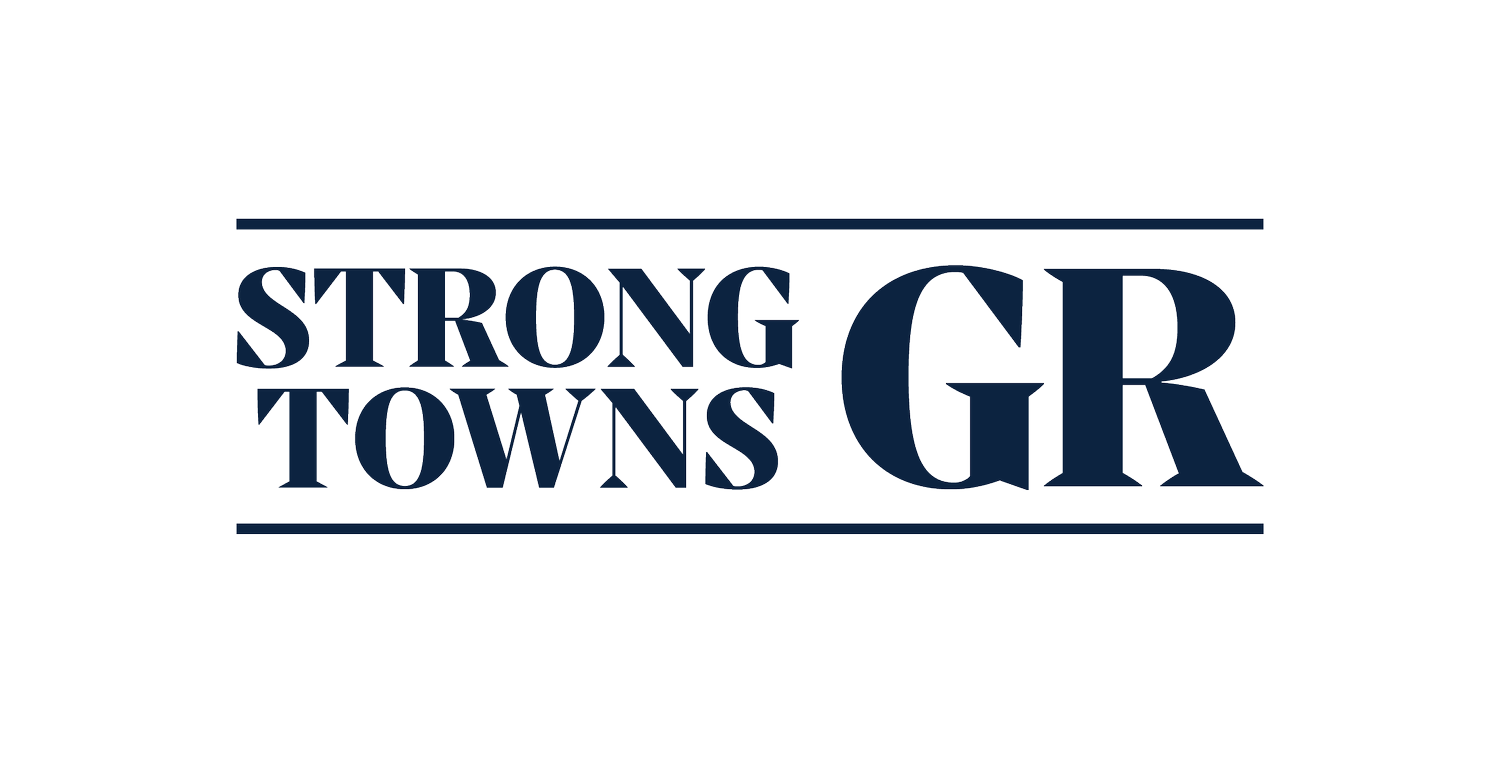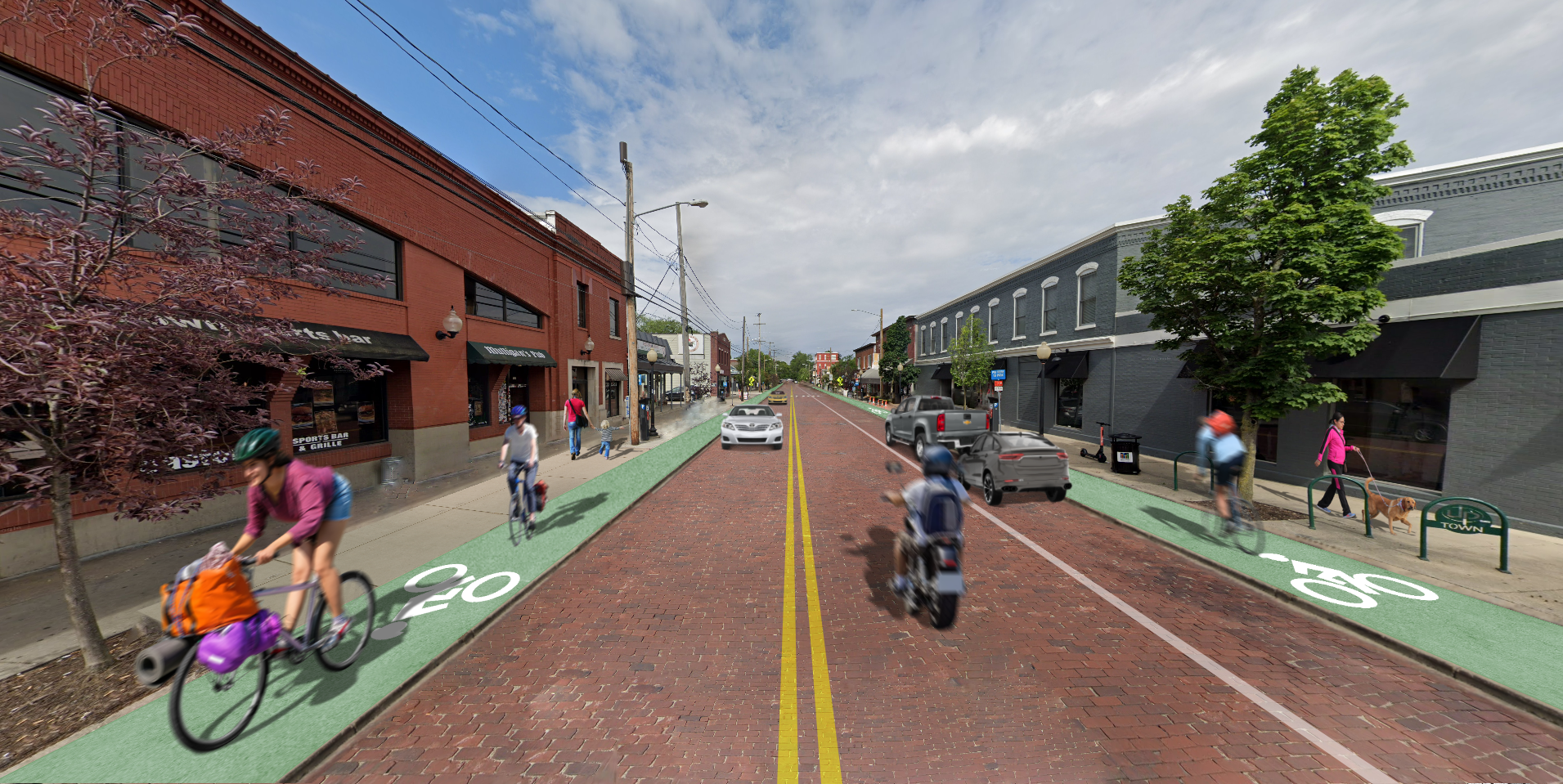A Case for Protected Bicycle Infrastructure on Wealthy Street
Authors: Laura Cesa, David DeTavernier
Believe it or not, Grand Rapids has a long history and dedication to cyclists, with people of all walks of life being able to enjoy the freedom of traveling anywhere they want. Contrary to popular belief, that popularity hasn’t waned; in 2024, over 112 million Americans—over one-third of the population—rode a bike, the highest rate in a decade [1]. Youth ridership rose sharply, signaling a new generation of cyclists. As Grand Rapids continues to invest in better bike lanes and connected routes, cycling will also continue to grow as a fun, healthy, and sustainable form of transportation.
Let’s dig into some data behind cycling infrastructure in North America and its safety, environmental, and economic value.
Safety and Practicality
Traffic deaths in the United States are on the rise, even as other countries see theirs fall. American streets are also facing congestion problems, making it harder for people to get where they are going. The addition of protected cycling infrastructure can help on both fronts. Research shows that investments in micromobility make our roads safer, less congested, and more accessible for all users, not just cyclists:
Cities like Chicago, Minneapolis, and Portland have all added protected and/or separated cycling infrastructure, and, in turn, their rates of fatal crashes have dropped anywhere from 30-60% [2].
In Seattle, a shift away from personal vehicles to micromobility meant that 8% of daily trips could be replaced with cycling, not only improving traffic congestion but also reducing greenhouse gas emissions [3].
Protected bike lanes are ADA compliant [4]; many people with disabilities are unable to drive but can use mobility devices like electric bicycles, scooters, and wheelchairs, all of which can be safely operated in cycling infrastructure.
Economic Value
Simply put, bike lanes are good for business. A great example of this is the Indianapolis Cultural Trail, an 8-mile urban bike and pedestrian pathway that cuts right through the heart of downtown. Estimates put the economic impact of the trail as high as $3.6 million, with nearly $1 million in impact to restaurants and $663,000 to retail businesses [5]. Let’s break that down:
Property values along the trail more than doubled, representing $1 billion in additional value.
Over half of businesses reported seeing more customers, and 48% reported increased revenue
Business owners created jobs; 37% added new part-time staff, while 17% added new full-time staff positions.
It’s not just Indianapolis. In Salt Lake City, 30% of on-street parking was removed along 9 blocks of a major commercial street, and protected bike lanes and pedestrian improvements at crosswalks were added. In the first six months after they opened, retail sales at local businesses were up 8.8% [6]. Minneapolis installed bike lanes on a major corridor by reducing the width of travel lanes and removing on-street parking. Retail employment increased 13% and food sales more than doubled [7].
Spending
Cyclists love spending money at local businesses. The Indianapolis Cultural Trail is a great attraction for out of town visitors, who on average spend $113 at local businesses and restaurants when on the trail [5]. In Toronto, a study found that over half of visitors using active transportation spend more than $100 per month, and three-quarters of them visit over 10 times per month [8]. Compared with those shoppers that drove, only about a third of whom will spend more than $100 and visit more than 10 times per month, the benefits are clear.
When faced with transformational projects, it’s tempting to cling to the status quo and worry about “unintended consequences.” Here, we’ve tried to allay oft-cited concerns that removing parking, both on- or off-street, will be detrimental to small and local businesses. In fact, the multitude of real-world data show just the opposite; when vulnerable road users are prioritized with safe and accessible micromobility infrastructure, businesses—and people—thrive.
Further reading:
1. Birkicht R (2025) More Americans Rode a Bike Than Ever Before in 2024. In: PeopleForBikes. https://www.peopleforbikes.org/news/bicycling-participation-report-2024. Accessed 21 Oct 2025
2. Marshall WE, Ferenchak NN (2019) Why cities with high bicycling rates are safer for all road users. Journal of Transport & Health 13:100539. https://doi.org/10.1016/j.jth.2019.03.004
3. Fan Z, Harper CD (2022) Congestion and environmental impacts of short car trip replacement with micromobility modes. Transportation Research Part D: Transport and Environment 103:103173. https://doi.org/10.1016/j.trd.2022.103173
4. (2015) Separated Bike Lane Planning and Design Guide. U.S. Department of Transporation Federal Highway Administration. https://www.fhwa.dot.gov/environment/bicycle_pedestrian/publications/separated_bikelane_pdg/page00.cfm
5. Burow S, Majors J (2015) Assessment of the Impact of the Indianapolis Cultural Trail: A Legacy of Gene and Marilyn Glick. Indiana University Public Policy Institute. http://policyinstitute.iu.edu/Uploads/PublicationFiles/15-C02%20CulturalTrail%20Assessment.pdf
6. (2015) 300 South Progress Report: Broadway Protected Bike Lane. Salt Lake City Division of Transportation. https://drive.google.com/file/d/0B8tOk7_upXv5djhCajg1Z0I3bmhTVTIxWldwRzA0YjJWNW9R/view?usp=sharing&resourcekey=0-Fr7Mp141yXvXzW6u5NBjqQ
7. Liu JH, Shi W (2020) Understanding Economic and Business Impact of Street Improvements for Bicycle and Pedestrian Mobility. National Institute for Transportation and Communities. https://nitc.trec.pdx.edu/research/project/1161
8. Sztabinski F (2009) Bike Lanes, On-Street Parking, and Business: A Study of Bloor Street in Toronto’s Annex Neighborhood. Clean Air Partnership. https://www.bikeleague.org/sites/default/files/bikeleague/bikeleague.org/programs/bicyclefriendlyamerica/bicyclefriendlybusiness/pdfs/toronto_study_bike_lanes_parking.pdf

